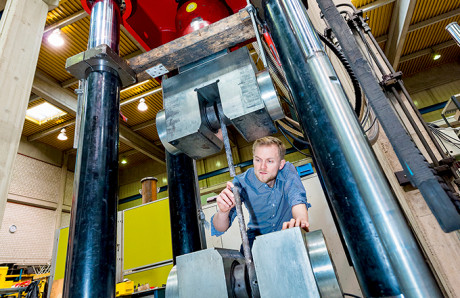In future, the service life of bridges may be estimated more accurate than ever before. Engineers from the Ruhr-Universität Bochum (RUB) have refined mathematical models for calculating them. Unlike previous models, they take local conditions into consideration, rather than depending on average default values. The team headed by Dr Mark Alexander Ahrens and David Sanio from the Institute of Concrete Structures spent two and a half years studying the flyover “Pariser Straße” at the junction “Heerdter Dreieck”, in order to refine existing models for determining the service life of bridges.
 The Bochum-based researchers wanted to know how much more precise the prognosis could become if they tailor-cut the model for one specific structure. The difference was considerable. According to the optimised arithmetical method, the service life would be 14 times as long as the one calculated using the previous model. One decisive factor was the fact that far fewer heavy-duty vehicles actually drive over the bridge than it has hitherto been assumed. In arithmetic terms, a heavy-duty vehicle with a load of 40 tons affects the structure in almost the same way as 100,000 passenger cars.
The Bochum-based researchers wanted to know how much more precise the prognosis could become if they tailor-cut the model for one specific structure. The difference was considerable. According to the optimised arithmetical method, the service life would be 14 times as long as the one calculated using the previous model. One decisive factor was the fact that far fewer heavy-duty vehicles actually drive over the bridge than it has hitherto been assumed. In arithmetic terms, a heavy-duty vehicle with a load of 40 tons affects the structure in almost the same way as 100,000 passenger cars.
Learn more: http://rubin.rub.de/en/featured-topic-traffic/things-bridges-could-know-about-themselves



